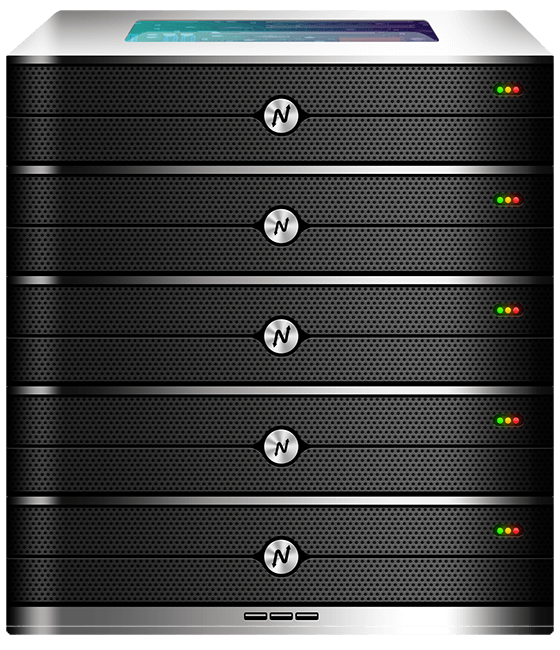Hey, developers, IT pros, and business owners in India, USA, UAE, UK, Germany, Japan, Canada, Switzerland, France, and beyond! The global digital economy is booming, with India’s digital market projected to hit $1 trillion by 2030 (per NASSCOM) and the global cloud computing market expected to reach $1.6 trillion by 2030 (per Grand View Research). Whether you’re troubleshooting network issues for an e-commerce platform in Mumbai, managing servers for a fintech app in Dubai, or optimizing IT infrastructure in London, knowing how to windows enable telnet is a game-changer. With cyberattacks costing Indian businesses ₹2,500 crore annually (per PwC 2024) and strict data privacy laws like India’s DPDP Act and GDPR, secure and reliable network testing tools like Telnet are essential.
Why does this matter? Telnet is a simple yet powerful protocol for testing network connectivity, and enabling it on Windows can streamline debugging for developers and IT teams. In this 3000-word telnet install guide, we’ll walk you through how to windows enable telnet, explain its benefits, and show how XenaxCloud’s hosting solutions—like VPS and Indian RDP—support secure network testing for businesses in India, USA, UAE, UK, Germany, Japan, Canada, Switzerland, France, and globally. Let’s dive in and get your network testing up to speed!
What is Telnet and Why Enable It on Windows?
Telnet (short for “teletype network”) is a protocol that allows you to connect to remote servers over a network to test connectivity or manage devices. By enabling the Telnet Client on Windows, you can use command-line tools to check if a server, port, or service is accessible—perfect for developers and IT admins troubleshooting web apps or hosting environments.
- Key Benefits:
- Network Testing: Verify connectivity to servers or services (e.g., HTTP, SMTP).
- Lightweight: Built into Windows, no third-party software needed.
- Cost-Free: Available on Windows 7, 10, and 11 at no extra cost.
- Versatile: Works for testing VPS, dedicated servers, or cloud setups.
XenaxCloud’s VPS and dedicated servers provide secure environments for running Telnet-based tests.
Why Global Businesses Need to Windows Enable Telnet
Businesses in India, USA, UAE, UK, Germany, Japan, Canada, Switzerland, France, and global markets rely on network reliability for:
- Troubleshooting: Diagnose connectivity issues for e-commerce or SaaS apps.
- Security: Test server accessibility while ensuring DPDP Act and GDPR compliance.
- Performance: Ensure low-latency connections for global users.
- Scalability: Support growing IT infrastructure with reliable tools.
- Cost-Effectiveness: Use built-in Windows tools like Telnet to avoid extra costs.
XenaxCloud’s Indian RDP simplifies remote server management for Telnet-based tasks.
How to Windows Enable Telnet: Step-by-Step Telnet Install Guide
Enabling Telnet on Windows is straightforward and takes just a few minutes. Follow this telnet install guide for Windows 7, 10, or 11.
Step 1: Open Windows Features
- Access Control Panel:
- Press
Win + R, typecontrol, and hit Enter. - Navigate to “Programs” > “Programs and Features.”
- Press
- Turn Windows Features On or Off:
- Click “Turn Windows features on or off” (requires admin privileges).
- Use Case: Preparing to enable Telnet for network testing.
Step 2: Enable Telnet Client
- Locate Telnet Client:
- In the Windows Features window, scroll to find “Telnet Client.”
- Enable It:
- Check the “Telnet Client” box and click OK.
- Windows will install Telnet (takes ~1 minute).
- Use Case: Activating Telnet for server diagnostics.
Step 3: Verify Telnet Installation
- Open Command Prompt:
- Press
Win + R, typecmd, and hit Enter.
- Press
- Test Telnet:
- Type
telnetand press Enter. - If installed, you’ll see the Telnet prompt (
Microsoft Telnet>).
- Type
- Use Case: Confirming Telnet is ready for network testing.
Step 4: Test Connectivity with Telnet
- Run a Test Command:
- Example:
telnet example.com 80to test HTTP connectivity. - If successful, you’ll connect to the server’s port.
- Example:
- Troubleshooting:
- If it fails, check the server’s firewall or network settings.
- Use Case: Debugging connectivity for a web app hosted on XenaxCloud’s VPS.
Step 5: Secure Your Telnet Usage
- Use Secure Alternatives: Telnet is unencrypted; use SSH for sensitive tasks.
- Enable Firewalls: Configure Windows Firewall or Imunify360 for protection.
- Leverage RDP: Use XenaxCloud’s Indian RDP for secure remote access.
- Compliance: Ensure DPDP Act and GDPR compliance for data transfers.
This telnet install guide ensures you can windows enable telnet quickly and securely.
Key Benefits of Windows Enable Telnet
- Ease of Use: Simple command-line interface for quick tests.
- Free Tool: Built into Windows, no additional costs.
- Network Diagnostics: Test connectivity to servers, ports, or services.
- Compatibility: Works with XenaxCloud’s VPS and dedicated servers.
- Global Accessibility: Supports IT teams in India, USA, UAE, and beyond.
Why Use Telnet with XenaxCloud’s Hosting Solutions?
XenaxCloud’s hosting services enhance windows enable telnet for businesses:
- VPS Hosting:
- Test connectivity to XenaxCloud’s VPS servers in India or globally.
- Pricing: ₹500–₹10,000/month.
- Dedicated Servers:
- Use Telnet to verify high-performance servers for enterprise apps (dedicated servers).
- Pricing: ₹6,000–₹35,000/month.
- Indian RDP:
- Manage servers remotely with a GUI, ideal for non-technical users (Indian RDP).
- Security: Imunify360 and firewalls protect your Telnet-based tests.
Telnet Install Guide: Advanced Tips for Developers
For developers and IT pros, here are advanced ways to use Telnet:
Testing Web Servers
- Command:
telnet yourdomain.com 80 - Action: Type
GET / HTTP/1.1and press Enter twice to retrieve the server’s HTTP response. - Use Case: Debugging a web app on XenaxCloud’s shared hosting.
Testing Email Servers
- Command:
telnet mail.yourdomain.com 25 - Action: Test SMTP connectivity for email services.
- Use Case: Ensuring email functionality for an e-commerce platform.
Automating Telnet Commands
- Scripting:
- Use PowerShell to automate Telnet tests:
$server = "example.com" $port = 80 $telnet = New-Object System.Net.Sockets.TcpClient $telnet.Connect($server, $port) if ($telnet.Connected) { Write-Output "Connected to $server on port $port" }
- Use PowerShell to automate Telnet tests:
- Use Case: Automating connectivity checks for a SaaS app.
Securing Telnet Sessions
- Use SSH Instead: For secure remote access, install OpenSSH:
dism /online /Enable-Feature /FeatureName:OpenSSH-Client - VPN Integration: Use a VPN for encrypted Telnet sessions.
- XenaxCloud Advantage: Pair with Indian RDP for secure GUI-based management.
Cost of Hosting for Telnet-Based Workloads
While Telnet itself is free, hosting environments for testing require investment:
- Shared Hosting:
- Cost: ₹149/month (shared hosting).
- Use Case: Testing small websites or blogs.
- VPS Hosting:
- Entry-Level: ₹500–₹2,000/month (1 vCPU, 2GB RAM, 50GB SSD).
- Mid-Tier: ₹2,000–₹5,000/month (2 vCPUs, 8GB RAM, 100GB NVMe).
- High-End: ₹5,000–₹10,000/month (4 vCPUs, 16GB RAM, 200GB NVMe).
- Provider: XenaxCloud’s VPS.
- Dedicated Servers:
- Cost: ₹6,000–₹35,000/month (dedicated servers).
- Use Case: High-traffic apps requiring robust testing.
- Domains: ₹500–₹2,000/year (domains).
- Add-Ons: ₹500–₹2,000/month for Imunify360, CDN, or extra IPs.
XenaxCloud’s pricing ensures affordability for businesses in India, USA, UAE, and beyond.
Telnet vs SSH: Which is Better for Network Testing?
While windows enable telnet is great for quick tests, SSH is a secure alternative:
Telnet
- Pros:
- Built into Windows, no installation needed.
- Simple for basic connectivity tests.
- Cons:
- Unencrypted, vulnerable to interception.
- Limited functionality for advanced tasks.
SSH
- Pros:
- Encrypted, secure for sensitive tasks.
- Supports advanced server management.
- Cons:
- Requires installation (e.g., OpenSSH).
- Slightly steeper learning curve.
Recommendation: Use Telnet for quick, non-sensitive tests and SSH for secure management. XenaxCloud’s VPS supports both.
Best Practices for Windows Enable Telnet
- Limit Usage: Use Telnet for testing, not sensitive data transfers.
- Secure Servers: Enable Imunify360 and firewalls on XenaxCloud’s VPS.
- Monitor Activity: Track Telnet sessions with logging tools.
- Use RDP: Simplify management with XenaxCloud’s Indian RDP.
- Backup Data: Use automated backups for DPDP Act and GDPR compliance.
Challenges and Solutions
- Security Risks: Telnet is unencrypted. Solution: Use SSH or XenaxCloud’s Indian RDP for secure access.
- Latency: Global servers may have 100–150ms ping. Solution: Use XenaxCloud’s CDN for faster connectivity.
- Compliance: DPDP Act and GDPR require secure data handling. Solution: Host sensitive data on XenaxCloud’s Indian servers.
- Technical Expertise: Telnet requires command-line knowledge. Solution: Use Indian RDP for GUI-based management.
- Downtime Risks: Server issues can disrupt testing. Solution: XenaxCloud’s 99.99% uptime ensures reliability.
Integrating Telnet with XenaxCloud’s Hosting Solutions
XenaxCloud’s hosting plans enhance windows enable telnet:
Shared Hosting
- Best For: Small sites or testing environments.
- Features: cPanel, free SSL, ImunifyAV.
- Cost: ₹149/month (shared hosting).
- Use Case: Testing a blog’s connectivity.
VPS Hosting
- Best For: Growing apps needing flexibility.
- Features: Scalable resources, Node.js/MySQL support.
- Cost: ₹500–₹5,000/month (VPS).
- Use Case: Testing a SaaS app’s network.
Dedicated Servers
- Best For: High-traffic or compute-intensive apps.
- Features: Indian/global data centers, Imunify360.
- Cost: ₹6,000–₹35,000+/month (dedicated servers).
- Use Case: Testing enterprise-grade infrastructure.
Indian RDP
- Best For: Non-technical users.
- Features: GUI access for server management.
- Use Case: Managing Telnet tests remotely (Indian RDP).
Reseller Hosting
- Best For: Agencies managing client apps.
- Features: White-label hosting, cPanel for clients.
- Use Case: Testing client sites (reseller hosting).
XenaxCloud’s Indian data centers ensure DPDP Act compliance for secure Telnet usage.

FAQs
How do I windows enable Telnet?
To windows enable telnet, go to Control Panel > Programs > Turn Windows features on or off, check “Telnet Client,” and click OK. XenaxCloud’s VPS supports Telnet testing.
Why use a telnet install guide for businesses?
A telnet install guide helps businesses test network connectivity for apps hosted on XenaxCloud’s VPS or dedicated servers.
Is Telnet secure for network testing?
Telnet is unencrypted; use it for non-sensitive tests. For secure management, try XenaxCloud’s Indian RDP or SSH.
How does windows enable telnet help developers?
Windows enable telnet allows developers to test server connectivity, ideal for debugging apps on XenaxCloud’s VPS.
What hosting supports Telnet testing?
XenaxCloud’s VPS, dedicated servers, and Indian RDP provide secure environments for Telnet-based testing.
Conclusion
Windows enable telnet with our telnet install guide empowers developers and businesses in India, USA, UAE, UK, Germany, Japan, Canada, Switzerland, France, and globally to troubleshoot network connectivity with ease. Whether you’re testing a web app on a VPS, managing enterprise infrastructure on dedicated servers, or simplifying remote access with Indian RDP, XenaxCloud delivers secure, reliable, and affordable hosting solutions. Ready to streamline your network testing? Explore XenaxCloud’s VPS, dedicated servers, or shared hosting today and power your digital success! Questions? Contact XenaxCloud’s support team now at 7:00 PM IST on September 9, 2025.






